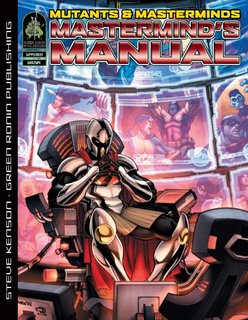Command and Colours: Ancients
"Hannibal? Crossed the Alps?! Hannibal..."
We set to C&C:A with a will then. Akragas and Crimissos River under our belts from before we headed straight for 218 BC and Ticinus River. 218 BC? Ah, this time Hannibal himself versus the Roman legions proper! Erm, not quite...
 Just look at all that cavalry! I vividly remember my immediate instinct the first time I had that much of an all-cavalry army in front of me- line them all up and charge! Gav got to ride out as the Carthaginians first this time though. I, as ever sought consolation- in the lessons I learned about how to handle all that heavy cavalry (HC).
Just look at all that cavalry! I vividly remember my immediate instinct the first time I had that much of an all-cavalry army in front of me- line them all up and charge! Gav got to ride out as the Carthaginians first this time though. I, as ever sought consolation- in the lessons I learned about how to handle all that heavy cavalry (HC).Expecting light cavalry (LC) en masse to do more than just skirmish, I was still shocked by the impact of the 2 wings of Carthaginian light cavalry. Their hit and run attacks separated my units, they massed quickly for exploitation, and their pesky evasion gave them surprising staying power. They ran me ragged and eventually won Gav the game, though it was a close fight.
For my part I'd decided that I needed to open passage to my cavalry through the centre. Fearing all that light cavalry I saw the chance to secure my right against the Ticinus. I didn't get off scot-free pulling this off, but it did leave me where I wanted. Unfortunately I'd been holding a counter-attack handy on the left, which I rashly chose to launch when it'd've been wiser to regroup to the centre. I ended up strung out and Gav was able to mop up a few units to sneak his win.
Playing the Carthaginians in my turn, I knew that it was vital to get the heavy cavalry moving quickly. Otherwise they'd simply get left behind leaving the actual fighting to the lights, as had happened to Gav. So I set out with all due haste to swing them to the open flank, screened by the lights. Hasdrubal's heavy cavalry in place, reformed, and thundering up my right, I took Marhurbal's screening Numibian horse and whipped them out, line across the centre and charged with them. The Roman centre thus effectively pinned by this brilliant manoeuvre, Hasdrubal ran his heavies all the way up the right wing, and was working his way back down the centre when it was all over. A satisfyingly crushing victory!
Lake Trasimenus
The Carthaginian cavarly having proved their worth at the Ticinus River Gav and I were game for more, so off we headed to Lake Trasiemenus, the following year. Hannibal makes his appearance at last!
 Gav lucked-in by drawing the Carthaginians, leaving me to play the Romans under the leadership of the "vain and incompetent patrician," Consul Gaius Flaminius. Outnumbered, my army's right wing split off by impassable hills, and Flaminius' own cohort caught with its back to the Lake Trasimenus, I certainly felt that Flaminius utterly deserved to be remembered in such unflattering terms!
Gav lucked-in by drawing the Carthaginians, leaving me to play the Romans under the leadership of the "vain and incompetent patrician," Consul Gaius Flaminius. Outnumbered, my army's right wing split off by impassable hills, and Flaminius' own cohort caught with its back to the Lake Trasimenus, I certainly felt that Flaminius utterly deserved to be remembered in such unflattering terms!I didn't have many options available to me, starting as I did with a 2-card hand that would build up to 4 in a couple of turns. Realising that I just had to get Flaminius' cohort's backs off the banks of Lake Trasimenus, I decided to aim to engage the Carthaginians in the defile, in the hope that I might be able to coordinate an attack between my centre and my right. This all started off rather nicely with a bit of 'Inspired Centre Leadership'- an apt riposte to Flaminius' unflattering reputation I felt.
It mattered not a jot. The Carthaginian cavalry swept in from my left. Flaminius' cohort died in droves as they were pushed back into Lake Trasimenus. Then they turned on my left wing, and it was soon all over. A victory every bit as crushing as my own splendid day at the Ticinus River only the year before.
1-2
Gurns!
Memoir'44
Guadalcanal- the Slopes of Mount Austen
Enthused by our visit to ancient times, Gav and I opted to head for the Pacific Theatre so that Gav- who's already played some M44- could get a taste of the Japanese. Random scenario selection left us paying a visit to Guadalcanal in January 1943. The Americans were trying to secure the very same Henderson field my attempts which to capture had cost the Japanese so much blood when I'd led them against Badger's USMC only recently.
 We played this scenario twice, swapping sides in the traditional manner. The Japanese lost each time. The Japanese faced several key problems in this scenario
We played this scenario twice, swapping sides in the traditional manner. The Japanese lost each time. The Japanese faced several key problems in this scenario- they are on the defensive, which plays against their strengths
- they are heavily outnumbered
- the USMC have lots of artillery.
The main difference in the 2nd game was that I could see the folly of just standing and fighting. So my plan was to abandon 'Gifu' and pull those troops back to hold the centre, while everything else would attack the American right. I made some progress in this- including, IIRC, successfully breaking through to destroy the US artillery unit on their right- but in the end the USMC's superior numbers and mobility won the day.
Wake Island
Plunging-in to Guadalcanal like this had been a harsh introduction to the Japanese for Gav, so we turned the pages of history back to December 23rd, 1941 and the Japanese invasion of Wake Island.
 The purpose of this game being to give Gav a taste of why I had been so singing the praises of the Japanese in M44, he naturally enough came storming up those beaches. I made the best fist I could at figuring out the proper tactics for a US win, but to no avail. Still, the point had been made, and Gav could see why I had likened the Japanese in M44 to rampaging Ork mobs in 40K!
The purpose of this game being to give Gav a taste of why I had been so singing the praises of the Japanese in M44, he naturally enough came storming up those beaches. I made the best fist I could at figuring out the proper tactics for a US win, but to no avail. Still, the point had been made, and Gav could see why I had likened the Japanese in M44 to rampaging Ork mobs in 40K!Breakout at Klin
Both still full of fight and with Gav eager to see more of the new M44 in action, there was nowhere else to go but the Russian Front. Gav again agreed to plunge in blindly, so another random selection took us to a German breakout operation, part of their regroupment after Operation Typhoon- their attack on Moscow in 1941- had stalled in the winter snows.
 Drawing the Russians, Gav had to contend with both the Russian command rules and the Blitz rules. For my part I had a very strong force with a couple of combat engineer units. These were to prove decisive.
Drawing the Russians, Gav had to contend with both the Russian command rules and the Blitz rules. For my part I had a very strong force with a couple of combat engineer units. These were to prove decisive.Faced with overwhelming force on his left, Gav did the sensible thing, pulling his covering units back towards Golyadi. Meanwhile I decided nothing ventured, and launched my combat engineers at the trenches. The fighting was bitter, but the engineers' special abilities made them deadly in close assault and they'd soon secured the central trenches. My victory wasn't long in coming, and it was pretty decisive.
3-4
More gurning! (But I found consolation in my handling of those Panzers at Klin, heh!)
Ivanhoe
With the hour well-advanced it was time for something quicker and dirtier even than M44 to round-off the session. So off to the medieval field of honour it was for another bash at this classic little game of tournament combat by Reiner Knizia.
The games went nip and tuck until it was 2 each. What I remember most about those games is the number of times I went in with a lance looking for final victory only to loose. So I was pretty pleased when I won the final game with an irresistible mounted charge. Gav asked afterwards why I hadn't just slapped all my purple cards down to claim an immediate victory. Experience has taught me that this can be a dangerous tactic, although there are surely times when it is absolutely the right thing to do. That last game was undoubtedly one of those times, but I guess I was playing my hand cautiously after having lost so often at this very same point in the previous games!
6-6
A satifying hard-fought draw. (But I was still master-at-arms and panzer-leader supreme! Mwah hah, etc!







